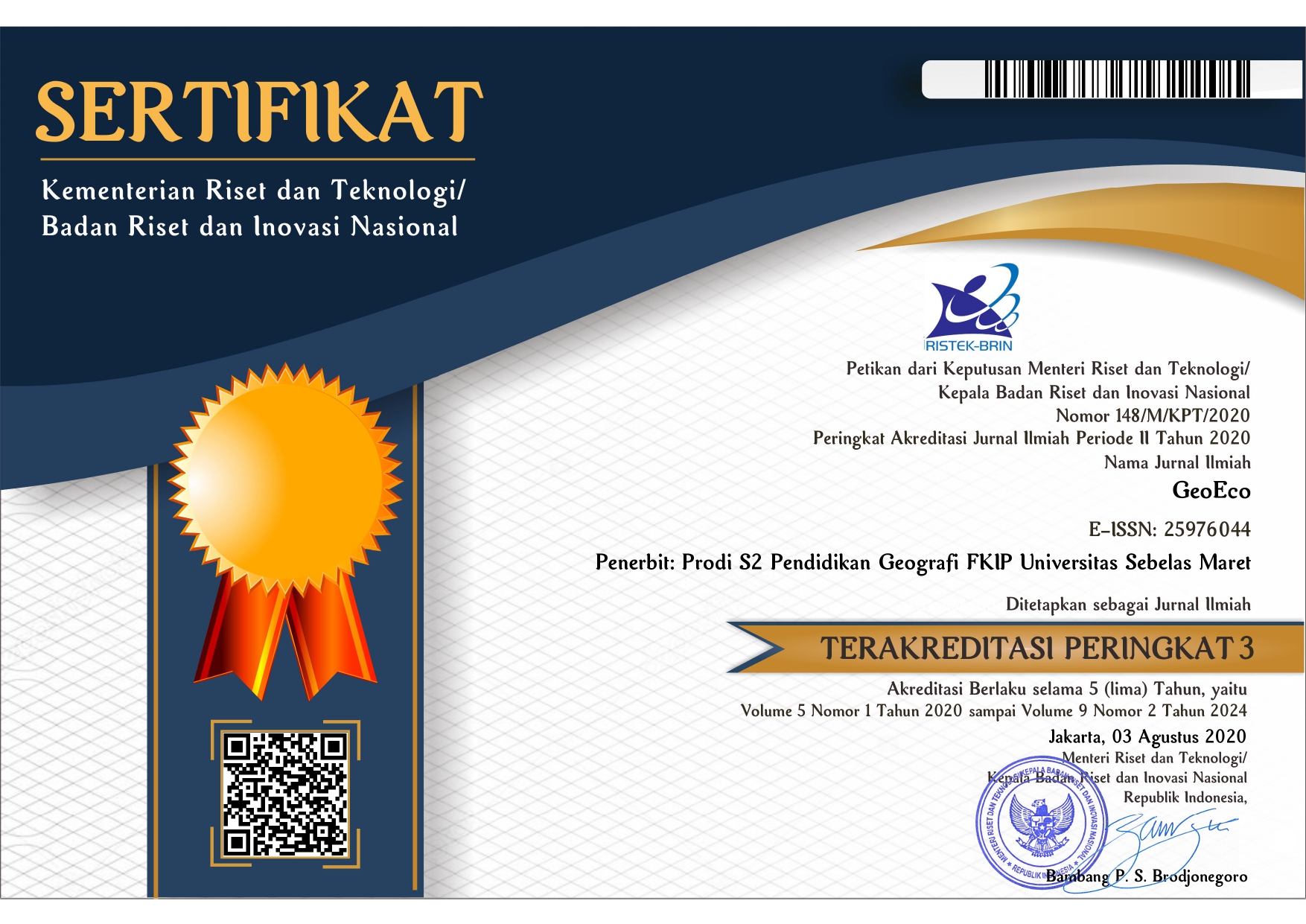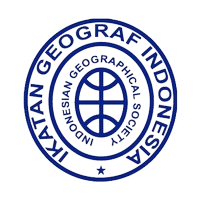COMMUNITY RESILIENCE AND ADAPTATION STRATEGY OF FLOOD DISASTERS IN TRUCUK DISTRICT, BOJONEGORO REGENCY
Abstract
This study aims to determine (1) the level of community resilience to flooding in Trucuk District, Bojonegoro Regency in 2018; (2) community adaptation strategies to flood disasters in Trucuk District, Bojonegoro Regency in 2018; and (3) efforts to improve resilience and adaptation to flood disasters.
The population in this study were all villages in Trucuk District, Bojonegoro Regency. The sample used was flood-affected communities in each village by purposive sampling technique. Data collection techniques using survey methods. Data collection was carried out by questionnaire and interview. Data analysis uses scorring techniques.
The results of the study are as follows. (1) Resilience of the Trucuk Subdistrict community against flooding has moderate resilience (52.86 - 62.38) and high resilience (65.89 - 75.13). the distribution of resilience is moderate namely there are 6 villages consisting of the village of Kandangan, Sumbang cucumber, Kanten, Pagerwesi, Padang, and Guyangan. For high resilience there are 6 villages consisting of Sumberjo, Mori, Tulungrejo, Trucuk, Sranak, and Banjarsari villages. (2) Adaptation strategies undertaken by the Trucuk District community in dealing with floods are physical and non-physical adaptations. The physical adaptation carried out by the community and the government is to improve physical conditions, such as elevating houses, repairing irrigation networks, building dams, and building embankments along rivers. Non-physical adaptation carried out by the community and the government is the existence of an early warning system in detecting the danger of flooding and community preparedness in dealing with floods, such as mutual cooperation and mutual assistance in all matters before and after the flood. (3) efforts to improve resilience and adaptation to flood disasters.
Keywords
Full Text:
PDFReferences
Among. The rainy season, 178 flood-prone villages in Bojonegoro. Retrieved on 10 January 2018.https://elshinta.com/news/34594/2015/11/23/musim-hujan-178-desa-di-bojonegoro-rawan-banjir/ Regional Disaster Management Agency. (2017). Genesis recapitulation 2016. In Bojonegoro.http://bpbd.bojonegorokab.go.id, Retrieved on 4 January 2018. Bakornas PB. (2007). Type - the type of recognition characteristics and disaster mitigation efforts in Indonesia: Jakarta. Bakornas PB. (2007). Flood Disaster Management Guidelines: Jakarta Haryono. (2011). General Guidelines Agriculture Sector Adaptation to Climate Change. Research and Development of the Ministry of Agriculture: ISBN 978-602-9462-04-3 Rahmayanti, Henita. (2014). Disaster-Prone Cities Community Adaptation Review of the Understanding, Perception and Preparedness Mitigation In Spatial Changes. Jakarta: Universitas Indonesia Sagala, S., Yamin, D., & Wimbardana, R. (2014). Residents Residents Non Structural adaptation Solid Settlement on Flood Disaster: A Case Study Baleendah subdistrict, Bandung regency. Bandung: Journal Resilience Development Initiative, ISSN 2406-7865, No. 5, pp. 1-18. Twigg, John. (2009). Disaster-Resilient Community Characteristics. Australia Indonesia Facility for Disaster Reduction (AIFDR), AusAID.Hold-Bencana_Catatan http://www.mpbi.org/files/prbbk5/dokumen/01-Karakteristik-Masyarakat-Panduan.pdf, Twigg, John. (2007). Characteristics of a Disaster-resilient Community. Bangladesh: for the DFID Disaster Risk Reduction Interagency Coordination Group Law Number 24 Year 2007 on Disaster Management.
Refbacks
- There are currently no refbacks.












.png)

